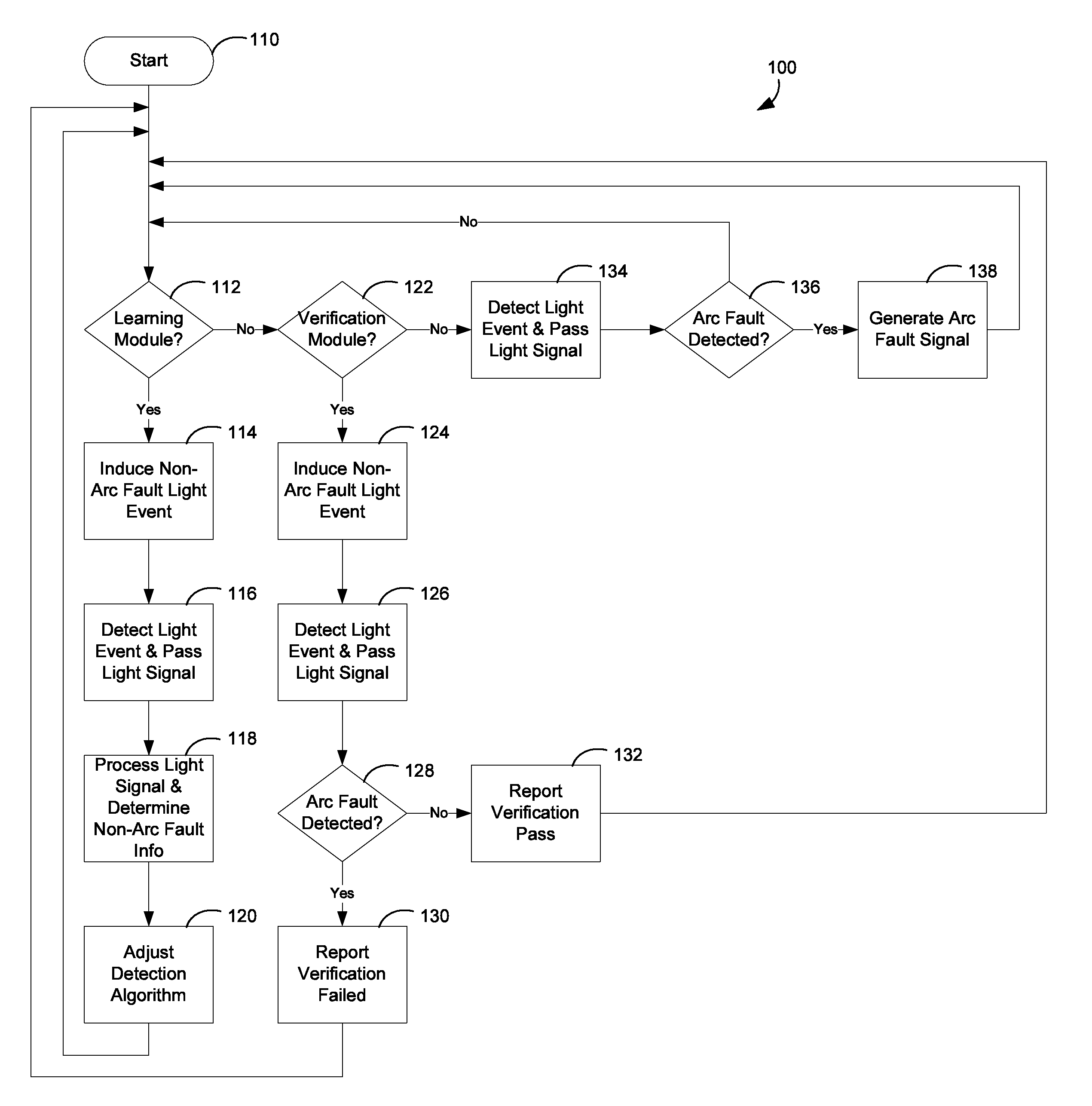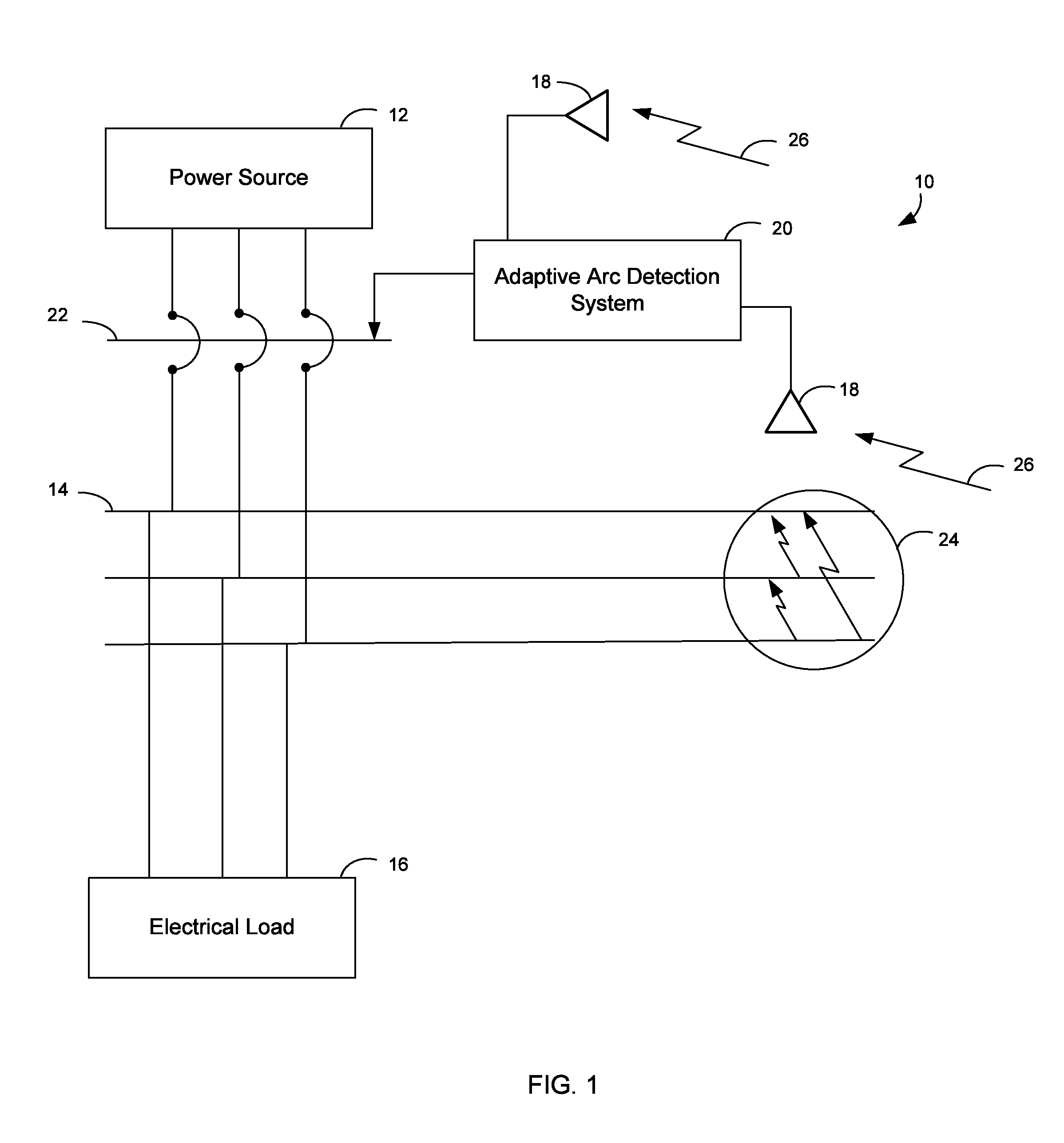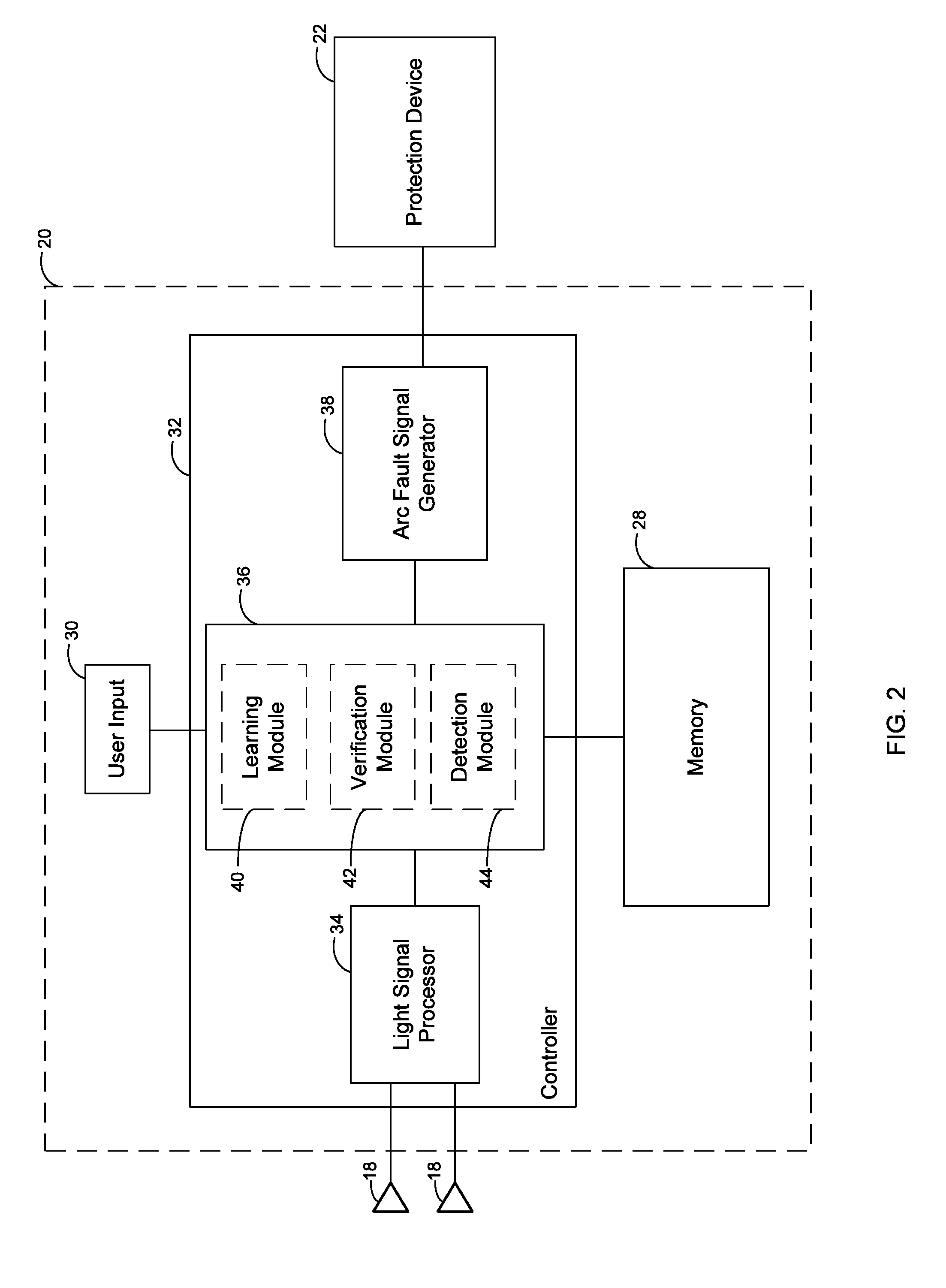Adaptive Light Detection For Arc Mitigation Systems
a technology of arc mitigation system and adaptive light, which is applied in the field of electric arc fault detection, can solve the problems of user installation of a system with the wrong sensitivity level, erroneous actuation of the protection device, and tripping, so as to avoid tripping
- Summary
- Abstract
- Description
- Claims
- Application Information
AI Technical Summary
Benefits of technology
Problems solved by technology
Method used
Image
Examples
Embodiment Construction
[0013]An arc fault event is generally an unintended, non-useful current through ionized gas (e.g., air) between at least two current carrying conductors, or between at least one current carrying conductor and a neutral conductor or ground. For example, an arc fault event may occur between two conductors when the conductors are too close to each other or a voltage exceeds the insulation level of the conductors. Such arc fault events can produce intense heat (potentially as high as 20,000° C.), light, pressure waves, and sound / shock waves that can pose a threat to the electrical components of an electrical power system. The systems and methods of the present disclosure rely upon the fact that arc fault events in electrical power systems generate light (i.e., light events), which can be detected by light sensors.
[0014]However, arc fault events are not the only source of light in electrical power systems. For example, an electrical power system may include other light sources such as, f...
PUM
 Login to View More
Login to View More Abstract
Description
Claims
Application Information
 Login to View More
Login to View More - R&D
- Intellectual Property
- Life Sciences
- Materials
- Tech Scout
- Unparalleled Data Quality
- Higher Quality Content
- 60% Fewer Hallucinations
Browse by: Latest US Patents, China's latest patents, Technical Efficacy Thesaurus, Application Domain, Technology Topic, Popular Technical Reports.
© 2025 PatSnap. All rights reserved.Legal|Privacy policy|Modern Slavery Act Transparency Statement|Sitemap|About US| Contact US: help@patsnap.com



